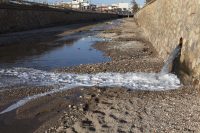Tips to Patch Your NPDES Permit Shield
NPDES permits establish allowable discharge limits or effluent limitations that include both concentration and volume of flow. Section 402(k) of the federal Clean Water Act (CWA) provides for what is known as a “permit shield.” This means that if you are in compliance with your NPDES permit, then you are deemed to be in compliance […]










